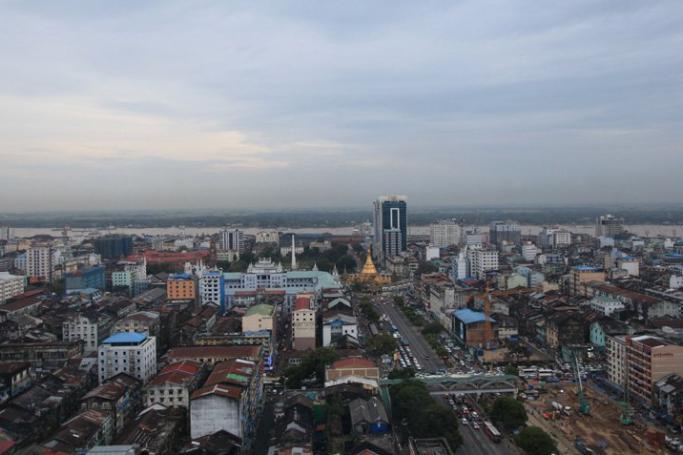It wasn’t long ago that Yangon was a sleepy place. Electricity was at best erratic, internet and phone connections scant, buildings crumbly, business slow and roads lightly trafficked.
In only a few short years the commercial hub has vaulted to prominence. The airport buzzes with smart arrivals and hasty departures and construction sites fill the air with dust.
Downtown is undergoing a transformation, with the battle between old and new fought on almost every block. In the rich parts of town, fleets of European cars jockey for position on cramped roads bursting at the seams.
Traffic jams, once a ludicrously rare occurrence, are now part of the daily bump and grind. Distances once measured in 10 minutes require abject re-calculation depending on the time of day. All of this movement and noise is obliterating what many had considered a charming example of old Southeast Asia.
Some are seeking to preserve what’s left, before it is gone for good. Thant Myint-U’s Yangon Heritage Trust gets plenty of attention for its efforts to preserve Yangon’s characterful buildings and old neighbhourhoods. This will get harder as the imperative for grander complexes and maximum occupancy fully takes hold.
Certainly Yangon at night now has a different vibe: bars and restaurants are often crammed and the range of entertainment options has multiplied. That so much has changed so fast can lead to bleary-eyed wonder.
What happens next? For the residents of Yangon this is a big question. Now that administrative functions are ensconced in Nay Pyi Taw, and the rest of the country is more accessible than ever, Yangon will have a fight to stay as relevant. It can now be a hard place to get things done. The traffic alone adds significantly to transaction costs.
Yet it still has almost all of the best hotels, with more being built in every township. It also has the advantage of great cultural institutions, renowned universities, spectacular religious sites and a broad commercial instinct. These are ingredients for a big city boom.
We have already seen efforts to get the plan of action right for the decades ahead. Japan’s foreign development officials have played a part and there are plenty of others looking to offer advice.
Transportation is one obvious area for reform, but the list goes on. It is perhaps only in the telecommunications sphere that Yangon is already moving by leaps and bounds. Even in areas with medieval sanitation, mobile phones can take care of business. Ensuring that everything else catches up will take time and gargantuan effort.
Yangon’s other major advantage is that for such a big and unequal city it remains remarkably safe. Yes, there is crime but I doubt there are many comparable cities in the world where street violence is so rare.
Still, simmering resentments aren’t hard to find and there are surely questions about how long the city will remain a secure place. The signs of extra worry on the security front are growing.
Perhaps the sectarian fault line is the most worrisome. People in the old neighbourhoods are proud that they have lived side-by-side, Muslim, Christian, Buddhist, for decades, even centuries. The admirable pluralism of Yangon’s urban bustle is to be treasured.
The fear is that it could be undone in an afternoon of rage, fire and steel. The hardening of barriers between different religious groups could see Yangon become a much less welcoming place. Its emerging reputation as an exuberant city, full of action and movement, requires people to feel at home.
Managing Yangon well will be more than a question of building better roads and rail and improving the tangle of drains and wires. It will require attention to culture and the insistence that co-existence is better for all.
(Dr Nicholas Farrelly is a partner at Glenloch Advisory and a Fellow in the Bell School of Asia Pacific Affairs at the Australian National University).
This Article first appeared in the March 26, 2015 edition of Mizzima Weekly.
Mizzima Weekly is available in print in Yangon through Innwa Bookstore and through online subscription at www.mzineplus.com
You are viewing the old site.
Please update your bookmark to https://eng.mizzima.com.
Mizzima Weekly Magazine Issue...
14 December 2023
Spring Revolution Daily News f...
13 December 2023
New UK Burma sanctions welcome...
13 December 2023
Spring Revolution Daily News f...
12 December 2023
Spring Revolution Daily News f...
11 December 2023
Spring Revolution Daily News f...
08 December 2023
Spring Revolution Daily News f...
07 December 2023
Diaspora journalists increasin...
07 December 2023
Euromoney Myanmar Global Investment Forum begins in Nay Pyi Taw












